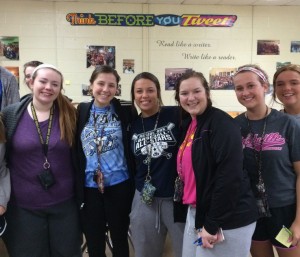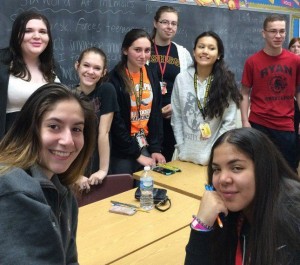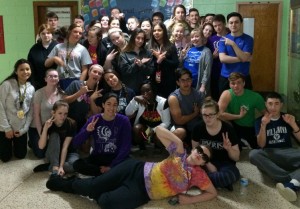Anyone who knows me knows that I do not believe in “teaching to the test”.
Certainly, I make sure to the best of my ability that I prepare my students for the standardized tests they take–PSATs, SATs, AP, and our diocesan test, Performance Series, and for Philadelphia School partnership, the Terra Nova.
I believe in demystifying these tests through taking and deconstructing practice tests, and I believe in helping kids learn to de-stress about these kinds of tests since they are just part of the life of a student.
There is often too much at stake–for the student and the school–to take a hands off approach to these tests.
What is interesting, however, is that a series of separate situations has led me to discovering something quite amazing. In my school, we are working to increase our students’ literacy, and one of the metrics we are using is the PSAT and SAT scores. Furthermore, since we adopted this online resource years ago, we are trying to find ways to encourage teachers to use Newsela more. Additionally, the archdiocesan schools have been working with Learning Science in discovering how digging through our standards and creating scales can improve rigor and, ultimately, achievement.
Since we use the CCSS ELA standards, finding evidence that Newsela would help us increase achievement in the Reading area is easy, because in addition to offering the ability to assign students the same content at their separate and appropriate reading level, Newsela has quizzes available for most of its articles that are geared toward the eight Anchor standards. And diving further into ELA reading, Newsela supports Reading in both Informational Text and Literature. AND it supports the literacy reading standards for Social Studies and Science and Technical Subjects. So that is pretty amazing.
But what really amazed me is how the SAT aligns with the Common Core.
I have been trying to find a list of skills that are tested in the SAT so that I could help my students drill down on their areas of weaknesses. In recent workshops, I have asked multiple people for crosswalks with CCSS and our standardized tests. I did not get any easy answers. I started going through a SAT prep book trying to identify the skills. I had my students begin to fill in a Google Form with the skills their PSAT report indicated they need to improve.
I googled various combinations of “SAT” and “PSAT” and “CCSS” and have hit interesting documents that talk about the percentage of content from the CCSS that is addressed in the SATs. And I even found a great resource that shows the alignment of CCSS and AP courses.
But I could not find a list of the skills addressed on the SAT–until last week when my principal emailed the faculty some resources, and there were the skills identified as SAT Reading Domain (pp. 17-18) and SAT Writing and Language Domain (pp. 29-30) smack dab in the middle of a PDF file of The Redesigned SAT Teacher Implementation Guide from the College Board. Math is there, too!
I had been gridding the skills from Newsela and CCSS ELA literacy, Social Studies, and Science and Technical Subjects to find commonalities, but when I started to add a column with the SAT reading skills, I was shocked.
Each part of the reading domain aligns with the CCSS. Here is my chart. I am working on the Writing correlation, but it does not fit as neatly.
My conclusion? Teaching the literacy standards from both the ELA Reading, Social Studies, and Science and Technical Subjects is EXACTLY what the students will need to know for the Reading part of SAT. And using Newsela across the content areas will support that.




